Today, I will be discussing the difference between Induction and Ceramic hob. And would shed some light on the misconception about the word “CERAMIC“. That over time has always been referred to as the “ceramic hob” and that has been widely accepted all over the world.
I have stated several times in my previous article about Major Domestic Appliance, that these two are mixed and confused to be the same time and again.
And in my humble opinion, I can see where the confusion comes.
Did you know that both cooktops are using “CERAMIC” glass panels? Yes, you heard it right (I will expound on this as we go deeper in our discussion).
Yet, again, why the so-called “Ceramic hob”? where did it originate, and who coined the term ceramic hob?
Please join me as we find the possible answers!
What is an Induction hob
In my previous article on How Induction Cooker Works, I have defined what is an Induction cooker in detail.
For the benefit of everyone, let us again define what is an Induction hob… shall we…
- An Induction Cooker is a cooking device that employs an electromagnetic coil to produce energy (electromagnetic field). And the power produced or generated will directly heat the induction-ready cooking pot.
- The transfer of heat is only between the induction coil and the induction-ready cooking pot/pan.
- An Induction hob is also known as an Induction cooker, an Induction cooktop.
- Available in both Freestanding and Built-in types.
What is a Ceramic hob
- A Ceramic hob is a cooking device powered by a radiant heating element or Infrared.
- The energy (heat) generated by the radiant heater is transferred to the ceramic glass panel, then from the ceramic glass panel to the cooking pot/pan.
- A Ceramic hob is also known as Ceramic cooktop, Ceramic cooker. And in the industry some would call or refer to it as Radiant Ceramic hob/cooktop/cooker.
- Available in both Freestanding and Built-in types.
Difference between Induction and Ceramic hob
To give us a clearer view of what is the difference between Induction and Ceramic hob, let’s compare them side by side.
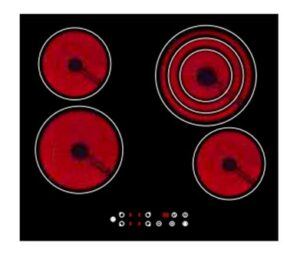
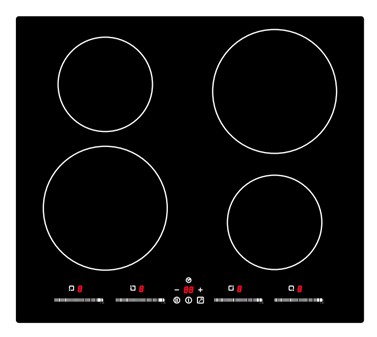
Properties/Features
Power ON
Ceramic hob
Controls and power levels can be activated and radiant heating element will glow and starts to heat up even without pot/pan, (see above image)
Induction hob
Without pot/pan placed on top, the unit will not work and will signal a missing pot/pan error and the unit will automatically shut off after 60sec.
Controls
Touch control, Slider control
Touch control, Slider control
Power level (common design)
9 stage power setting
9 stage power setting
Boost
No
Yes
Child Lock
Yes
Yes
Overheat Protection
Yes
Yes
Spillage/Overflow Protection
Yes
Yes
Auto Safety Switch Off
Yes
Yes
Residual Heat Indicator
Yes
Yes
Clock/Timer
Yes
Yes
Temperature Control
Yes
Yes
Pan/pot Sensor
N/A
Yes
Cooking Pan/Pot type
All types (e.g. ceramic, glass, steel, etc)
Induction ready, ferrous type
Glass panel type
Ceramic glass
Ceramic glass
Heating Element type
Radiant / Infrared
Induction coil/heating element

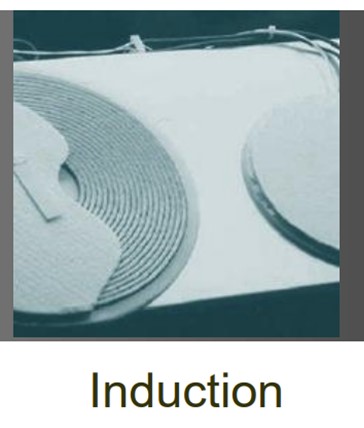
Heat transfer
Heating element-> ceramic glass-> pan/pot
*It requires heat transfer between every component
Heating element -> pan/pot
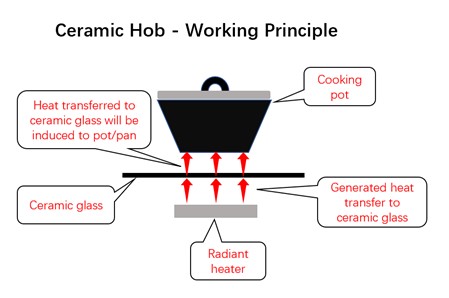
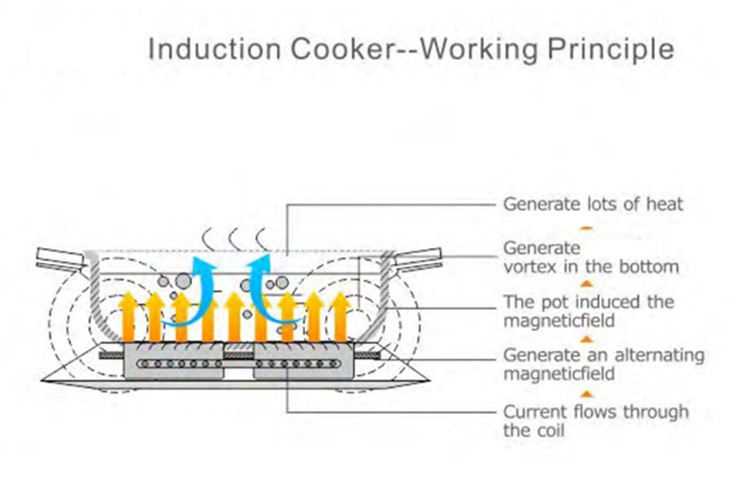
Hybrid models (combination of ceramic and induction)
Available
Available
Ceramic glass surface gets hot
Yes, cooking zone and including surrounding areas.
Cooking zone only after removing the pot/pan, however, heat is minimal but still need caution
Remark: The above properties are the most commonly found on both Induction and Ceramic hobs. The heating element and its features vary according to design, thus, I will refrain from elaborating to avoid confusion.
Major Components of Induction and Ceramic hob
Many components are needed to build an induction and or a ceramic hob. In spite of that, I will only focus on the two most critical part that defines them.
Let’s find out the two main components of induction and ceramic hobs.
1. Heating Element
The heating element is a critical component for both Induction and Ceramic hob. Here lies the overall performance of the hobs.
You now know that they are using different types of heating elements.
However, for manufacturers to choose the right supplier of the heating element is a long process of brainstorming because it will affect the products’ final cost.
Meanwhile, premium brands would always utilize the best heating element available to protect their brand or image. Even if it would mean to cost a fortune for a normal wage earner to buy one of their Induction or Ceramic hob.
On the other hand, there’s always that “alternative component” if they want to cut costs.
Here’s a tip, if you intend to buy an Induction and or Ceramic hob, ask the sales representative if the heating element is made by E.G.O.
Although, some brands will disclose it as a marketing strategy…
But various available models are using alternative parts and the price should be lower.
So now you got the hint, and I will not further elaborate.
2. Ceramic Glass panel
The ceramic glass panel is another critical part of Induction and Ceramic hobs.
And as I have mentioned earlier, both Induction and Ceramic hobs are using the same type of ceramic glass panels… where it became the genre of a Ceramic hob.
The thought that comes to my mind why Ceramic hob is being called a Ceramic hob as it is now is because of how the heat is being transferred.
In a Ceramic hob, the heat needs to pass to each component and it happens that from the heating element the heat is transferred to the ceramic glass and from the ceramic glass to the cooking pot/pan.
Whereas if we analyze for Induction hob, the heat transfer is by an electromagnetic field that can only happen between the heating element and the induction ready pot/pan (the ceramic glass has nothing to do with the heat transfer, aside from it being a panel for pot/pan to rest).
Like the heating element, selecting the supplier of ceramic glass to be used will also greatly affect products’ final cost.
In the same manner, premium brands would always utilize the best ceramic glass available to protect their brand or image.
Consequently, for ceramic glass, there’s always that “alternative part or supplier” if they want to cut costs.
Why only use ceramic glass?
- A ceramic glass has all the special Thermal and Mechanical characteristics that could meet the demands of a glass panel required for Induction and Ceramic hobs.
The most sought-after ceramic glass brands are SCHOTT CERAN and EURO KERA.
You will see it marked on the hob’s ceramic glass panel.


Although there are other top manufacturers of ceramic glass such as N.E.G. from Japan. But the above two brands are the most popular to many manufacturers.
Which is better Induction or Ceramic hobs?
An Induction hob will generate heat faster than a Ceramic hob, especially Induction hob has a Boost function that can double the power and make the cooker heat even faster.
So, logically you can cook faster using an Induction hob.
On the other hand, you don’t have to worry about what cookware to use when cooking using Ceramic hob.
Likewise, the Ceramic hob is cheaper than the Induction cooktop.
Depending on what weighs more important to you according to your need, then you can decide whether to go for Induction or Ceramic hob.
But, wait…
A Hybrid model (combination of Induction and Ceramic) can immediately solve your problem and you can enjoy both worlds of Induction or Ceramic cooktops.
Conclusion
I have shown you what are the difference between Induction and Ceramic hob.
I have also given my opinion about why a Ceramic hob is being called a Ceramic hob as it is now that is widely accepted.
That’s just my personal opinion, as I cannot find any definitive answer even after asking several manufacturers I know who are specializing in Induction and Ceramic hobs.
So there you have it folks, thank you for reading. If you find this article helpful, or you have some questions or suggestions, please leave a comment below. I will answer them as soon as I can to the best of my knowledge.
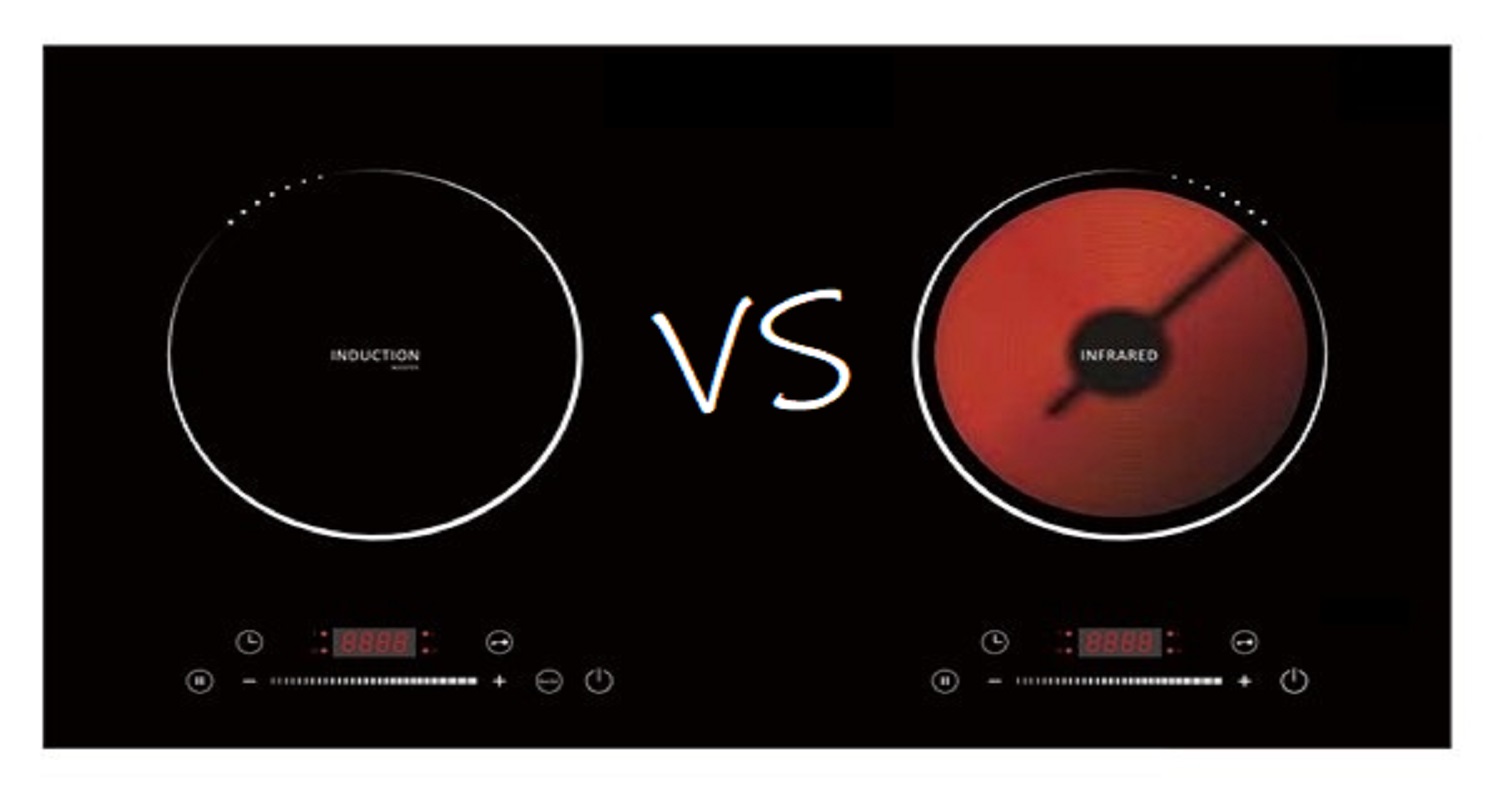
This was a great read, When I saw the title I didn’t know what I was about to read. Before today I didn’t know what any of this was. I guess the saying you learn something new every day is true. I now know about the child lock which is important. Thank you for your insight on this. great article.
Hi Sharee
Thanks for visiting my website.
“Child Lock” is one safety feature that is always present in an Induction cooker as well as a Ceramic hob.
Because it allows you to prevent your kids from altering the settings or playing with the controls which could lead to accidents. Once the “Child Lock” function is activated, all controls cannot be toggled except for the Power button.
This is especially useful if you are cooking at low power and you want to leave it there for a while (e.g. simmering)
Glad that you found my article helpful and hopefully you now got a better understanding what is the difference between an Induction hob and a Ceramic hob.
Rowe
Thanks. As an 85-year-old trying to learn which utensils to buy, this was informative. I just wish the ceramic hob wasn’t so sensitive to small spills or popovers.
Thank you for visiting my website.
I’m glad you found this article useful.